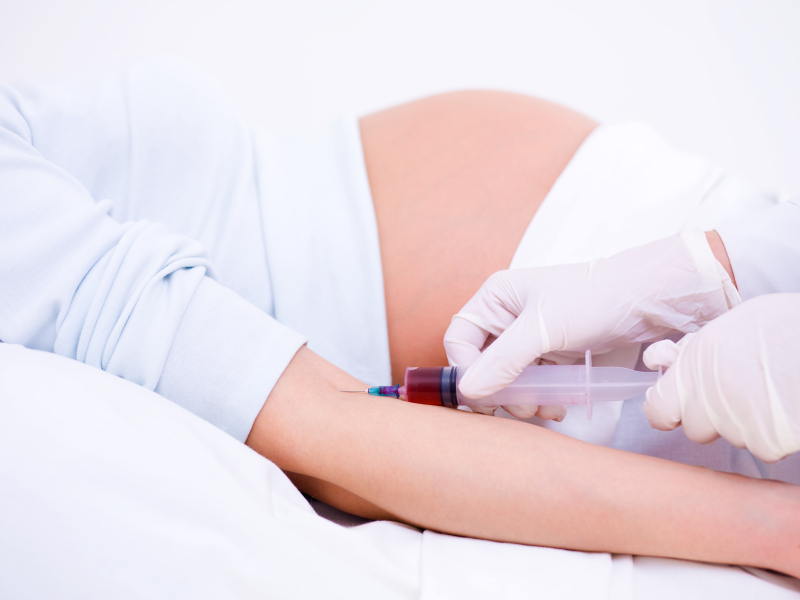Noninvasive prenatal testing (NIPT) can help doctors discover chromosomal disorders, which include Down syndrome as well as aneuploidies in the three sex the chromosomes (trisomy 21, trisomy 18, as well as trisomy 13). NIPT can also detect microdeletions on chromosomes which could create conditions such as Turner syndrome Klinefelter syndrome, and triple X and XYY syndromes.
NIPT is a useful tool that can help couples and mothers make informed decisions regarding their pregnancy. But, the results of the test may also trigger tension and anxiety for certain patients.

Prenatal Screening for Rare Genetic Disorders
It is a growing screening method for chromosomal abnormalities which can lead to genetic diseases. It uses a sample of the mother’s blood in order to find smaller DNA fragments missing (microdeletions) in specific chromosome regions.
Advanced NIPT tests utilize sequencers that are able to pick up on microduplications and inserts. This can screen for more unusual chromosomal disorders, such as certain syndromic conditions such as DiGeorge syndrome or deletions of the X chromosome. These could lead to Turner and Klinefelter syndromes.
The NIPT test detects Down syndrome, as well as common trisomies like trisomy 18 (Edwards) as well as trisomy 13 (Patau). It can also screen for aneuploidies on the X or the Y chromosomes. For instance, Turner syndrome or the XXY (Klinefelter syndrome). NIPT can determine also the gender of the fetus as early as the pregnancy.
Non Invasive Prenatal Testing for Rare Conditions
The test, based on the analysis of circulating, cell-free embryonic DNA (cff-DNA) inside the mother’s bloodstream. It is an alternative that is safe to more invasive tests for prenatal birth, known as amniocentesis, chorionic and chorionic sampling. The procedures carry a 1- percentage chance of miscarriage.
The NIPT is able to detect aneuploidies like trisomies which can cause Down syndrome and Edwards syndrome, and chromosome microdeletions that cause Patau and Kleinfelter syndrome. It can also determine sex from nine weeks gestation far before ultrasound.
In the case of women whose tests show a significant likelihood of having a rare illness it is possible to be confirmed by chorionic villus test. However, the test has an extremely low rate of false positive. In addition, the detection of some rare conditions may be made more difficult by a poor number of fetuses or additional factors such as overweight mothers, as well as certain auto-immune disorders that can affect the cf-DNA levels in placenta.
Finding Rare Genetic Disorders that have NIPT
NIPT currently detects chromosomal anomalies like trisomy 21 (Down syndrome), trisomy 18, as well as trisomy 13, all of which result from extra or damaged copies of certain chromosomes. Additionally, it can be utilized to detect the genetic causes of disorders result of changes to single genes.
These changes are triggered by small duplications or deletions in certain parts of the genome. As such, they are among the most easy to spot. Certain advanced xet nghiem nipt ha noi NIPTs may also be able to detect other rare diseases, such as Turner syndrome and 22q 11.2 deletion syndrome.
Due to its inexpensive cost and the fact that it is non-invasive it is feasible to be used for LMICs alongside maternal serum screening and ultrasound studies. But, the implementation of this method will require technological innovation focused on low-resource settings, as well as training for community health workers in the process of performing blood draws and evaluate ultrasound images.
NIPT Benefits for Expectant Parents
When pregnant women are in need of NIPT, it is generally recommended, based on Midwifery and OB-GYN guidelines. It is a good idea to check with the insurance company you have with to determine what NIPT is covered, and also how much out-of-pocket expenses are.
It is a test for screening that can tell whether a person is more risk of being affected by certain genetic conditions. It isn’t able, however, to detect the disease. The study of 2016 revealed that NIPT shows a high degree of sensitivity to trisomy 21 in addition to other hyperchromosomal disorders.
It is also able to detect rare genetic conditions that either occur in families like cystic fibrosis as well as Duchenne muscular dystrophy. These conditions can also arise at conception, like thanatophoric dysplasia. In the past, these disorders could only be diagnosed with an invasive test like amniocentesis or CVS. NIPT can avoid these invasive procedures, and improve the chances of having a positive diagnosis.
Challenges in NIPT for Rare Genetic Disorders
Noninvasive prenatal screening (NIPT) analyses fetal cell-free DNA from maternal blood. It has gained popularity since it permits the detection of chromosomal aneuploidies as well as the identification of sex with a low risk of miscarriage. NIPT has seen improvements in recent times and is now able to detect of microdeletions >= 7 MB, and singular gene diseases caused by mutations or autosomal dominant inheritance.
But, there’s much research to be conducted to increase the precision of the NIPT. Particularly, the PPVs of various aneuploidies and single gene disorders are different among studies and patient cohorts that make it difficult to counsel patients.
NIPT is currently prohibitively expensive for LMICs however ongoing sequencing cost declines could make the test less costly and accessible. Community health workers are already able to draw blood, so it should be relatively simple to get them started with NIPT.